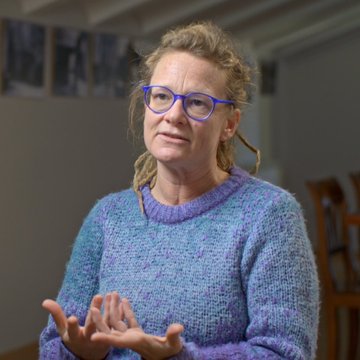Drought and water use: facts and myths
The Spanish public thinks technology can solve the water crisis and that water that reaches the sea unused goes to waste.
If you were to go outside and ask people for their opinions about the current drought, what do you think they might say? Would they mention the ways we squander water? Would they talk about climate change? Or would they complain about a lack of reservoirs and major infrastructure? Luckily, there is no need to guess: the Citizen Drought Observatory already conducted such a poll and has recently presented its findings in its Report on Water and Drought Survey Results.
As the report reveals the Spanish public thinks technology can solve the country’s water crisis and that water that reaches the sea unused goes to waste. Likewise, although the vast majority of people rightly mention intensive agriculture as one of the most water-intensive sectors, they generally believe that irrigation accounts for just 50% of total consumption, whereas the real figure is 80%. With the help of CREAF’s experts, we look at which of society’s ideas are correct and which fall into the category of climate and techno-optimistic myths.
Technology to the rescue?
“Our aquifers are on the edge of a precipice and are also at risk of degradation, which would make the water scarcity situation even worse,” explains researcher Annelies Broekman.
It is scientifically and socially evident that we have a problem with water. Almost 60% of survey respondents think there is not enough water and that we should not consume more than we already do, a view especially prevalent among those who have already experienced intense drought first-hand However, the population keeps growing, and so does its thirst for water. So, what should be done to ensure long-term availability? Half (55%) of the survey respondents think that taking more water from aquifers is an option, and that the most important management measures are reusing waste water and making use of seawater (non-conventional water). “Those ideas should be treated with caution because there is a risk of generating false expectations,” warns CREAF researcher Annelies Broekman.
Firstly, the reality is thatour aquifers are at the limit and are also at risk of degradation, further compromising the scarcity situation.Among European countries, Spain ranks third (behind Cyprus and Greece) in terms of the proportion of available water reserves made use of And inside Spain, the Segura, Júcar and Guadiana head a list of overexploited rivers. In Catalonia, for example, the Carme-Capellades aquifer has been experiencing record lows in water volume since 2016 and water restrictions have repeatedly been put in place Another well-known case is Doñana National Park, whose aquifers are being depleted and where the lack of water is causing hazardous nitrate concentrations.
And if the idea of exploiting aquifers further is a non-starter, the same applies to using technology to turn the situation around.

"Seawater desalination plants make water much more expensive, due to their energy costs and environmental impact, and brine is often discharged into the sea in areas near them They are something we can fall back on from time to time, of course Of course, but they are not the solution to the current water crisis"
ANNELIES BROEKMAN, investigadora del CREAF.
What about reusing waste water? “We forget that waste water has many limitations, because treating it is very costly, both economically and where energy is concerned,” states Broekman. “The degree to which it has to be treated to achieve a quality level suitable for irrigation means that doing so is simply not worthwhile in many cases,” she continues. The key lies in organization aimed at scaling down our use of water, and in the restoration and protection of every body of water in every drainage basin, to guarantee ecosystem health and availability for human use. Unfortunately, we are still a very long way from striking such a balance.
Unconsumed water does not go to waste
The basic problem is a tendency to think that every drop of water must be made use of, at all costs, before it reaches the sea. The Citizen Drought Observatory’s report shows that 47% of survey respondents share that view and feel that water that is not consumed is wasted and serves no purpose."

“That myth filtered into society years ago. It suggests that, in general, the population attributes great importance to water’s productive value, but it overlooks the fact that the productive value in question depends on the health of the hydrological system and the ecosystems linked to it.”
ANABEL SÁNCHEZ, responsable de impacto social de la ciencia en el CREAF
It is important to remember water from rivers and aquifers reach the sea, to keep the whole ecosystem and all related human activity running properly. Some of the consequences of such water failing to reach the sea are coastal erosion, we run out of beaches loss of marine life (including some of the fish we eat) due to a lack of nutrients, and changes in the sea’s temperature and salinity.
According to Broekman, "fresh water transports nutrients, which are crucial to the survival of fish populations, and sediment, which is distributed along the coast and is what forms beaches” . “That phenomenon can be clearly seen at the Ebro Delta, which is vanishing because the basin’s numerous dams are stopping sediment from reaching it,” she adds."
Irrigation: the largest water consumer
Only 7% of respondents correctly indicated that around 80% of all available water is used to irrigate crops.
A final point of interest in the report is who wastes the most water. The survey makes a sectoral breakdown, in which the majority of the population points to agriculture and industry as the largest consumers. While this is true, because intensive agriculture is the most demanding for water, the Observatory indicates that the figures are surprising, because "only 7% of the people surveyed were correct when they indicated that around 80% of the available water is used to irrigate crops". Most people think the amount is around 50%, approximately 30 percentage points below the real figure.
The label of excessive water consumption cannot be indiscriminately applied to all kinds of agriculture.
However, the label of excessive water consumption cannot be indiscriminately applied to all kinds of agriculture. This is something Broekman and Anabel Sánchez are keen to point out: "Most of the water consumed is linked to the most intensive farming, while less intensive approaches have smaller demands" It is very important for society to have that information and be aware of how the way we consume food influences water consumption. And we must not forget that this also has implications related to maintaining an active rural world and quality ecosystems.”
Finally, more than half of the people consider that the area under irrigation has decreased over the last ten years. That, too, is incorrect. The extension of irrigated crops is precisely what has led to the water stress the territory is experiencing today,” remark the Observatory’s experts. There is still hope, however. “There are agricultural systems, such as regenerative agriculture and extensive livestock farming, that have a smaller water footprint and are not detrimental to bodies of water, farmers or their sector,” explains Broekman.







